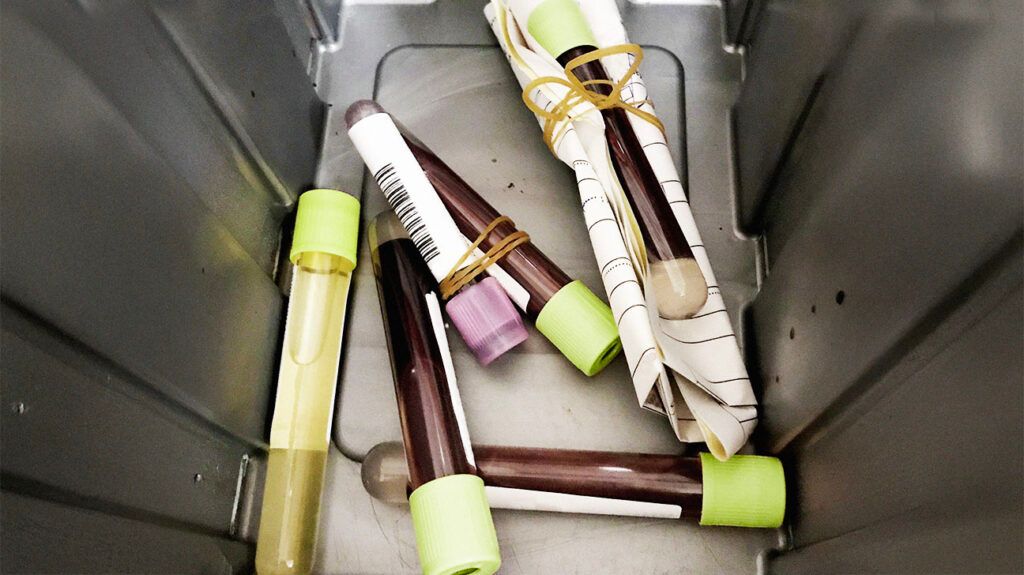Hypocholesterolemia is a condition in which cholesterol levels are too low. It can cause health complications, such as a higher risk of bone fractures, and may have a link to depression.
Hypocholesterolemia is less common than hypercholesterolemia, which involves cholesterol levels that are too high and may lead to stroke or heart attack.
People may develop hypocholesterolemia for many reasons. Possible causes include certain underlying health conditions and an inherited condition.

Hypocholesterolemia occurs when a person’s cholesterol levels are too low. While people are typically concerned about having high cholesterol, low cholesterol can also be a cause for concern.
For most people, the ideal level of low-density lipoprotein (LDL) cholesterol — sometimes called “bad” cholesterol — is
A person’s level of high-density lipoprotein (HDL) cholesterol, or “good” cholesterol, should ideally be 60 mg/dL or higher. The HDL level is low if it is less than 50 mg/dL in women or less than 40 mg/dL in men.
When both the LDL level and the total cholesterol level are in the
Learn more about cholesterol levels.
Hypocholesterolemia has many possible causes, including the use of statins or PCSK9 inhibitors to treat high cholesterol. In some cases, taking these drugs can cause cholesterol levels to drop too low. However, people rarely develop hypocholesterolemia as a result of taking medications.
Genetics
People who have a family member with familial hypobetalipoproteinemia or another inherited genetic condition,
Learn more about low cholesterol.
Medical conditions
People with liver disease may have difficulty maintaining optimal cholesterol levels. The liver regulates cholesterol levels, and a health condition such as hepatitis or chronic liver disease may interfere with typical liver function.
Malabsorption syndromes may also contribute to hypocholesterolemia since these conditions prevent the body from efficiently absorbing nutrients from food, including lipids such as cholesterol. People can develop malabsorption as a result of health conditions
Hyperthyroidism, a condition that causes the thyroid gland to produce too many hormones, can increase the breakdown of lipids, including cholesterol, and may cause hypocholesterolemia over time.
Certain types of anemia may reduce the concentration of cholesterol in the blood. However, a 2016 study in mice found opposite results, with higher cholesterol levels in mice with a B12 deficiency. For this reason, more research is needed to understand the role of anemia in hypocholesterolemia.
Read about pernicious anemia.
Like people with high cholesterol, those with hypocholesterolemia typically do not experience any specific symptoms until a major event occurs. For this reason, people should ask healthcare professionals to check their cholesterol levels regularly with a blood test.
Help is out there
If you or someone you know is in crisis and considering suicide or self-harm, please seek support:
- Call or text the 988 Lifeline at 988 or chat at 988lifeline.org. Caring counselors are available to listen and provide free and confidential support 24/7.
- Text HOME to the Crisis Text Line at 741741 to connect with a volunteer crisis counselor for free and confidential support 24/7.
- Not in the United States? Find a helpline in your country with Befrienders Worldwide.
- Call 911 or your local emergency services number if you feel safe to do so.
If you’re calling on behalf of someone else, stay with them until help arrives. You may remove weapons or substances that can cause harm if you can do so safely.
If you’re not in the same household, stay on the phone with them until help arrives.
However, other research has found opposite evidence without being able to replicate the results of the 2018 study. More research is needed.
Doctors
This test can determine a person’s total cholesterol levels. It typically includes four measurements, one for each type of lipid:
- HDL level
- LDL level
- triglyceride level
- total cholesterol level
Based on the results of the lipid profile, a doctor can diagnose hypocholesterolemia. However, they may order other tests if the results are not clear or if they suspect another underlying health condition.
The treatment for hypocholesterolemia depends on the underlying cause of the low cholesterol. Lifestyle changes that may help with low HDL include:
- avoiding or quitting smoking
- getting more physical activity
- making efforts to reach or maintain a moderate body weight
If hypocholesterolemia is linked to an underlying condition or a genetic disorder, treating or managing that condition may help improve cholesterol levels. For example, a person may take supplements and vitamins that help improve the absorption of lipids.
People with hypocholesterolemia may have a
Other possible complications
- depression
- more fragile bones and bone fractures
- suicidal thoughts
- increased risk of infections
- mood changes
However, because hypocholesterolemia is rare, research on the condition is limited. More scientific evidence is needed to confirm the long-term effects associated with low cholesterol levels.
What happens if cholesterol is too low?
People with cholesterol levels that are too low may have
Is total cholesterol of 100 too low?
A total cholesterol of 100 mg/dL
How to treat hypocholesterolemia?
The treatment of hypocholesterolemia depends on the root cause of the low cholesterol levels. In certain cases, treating the underlying condition that causes hypocholesterolemia can improve cholesterol levels. In other cases, a person may need to make some diet and lifestyle changes.
Cardiovascular health resources
Visit our dedicated hub for more research-backed information and in-depth resources on cardiovascular health.
Hypocholesterolemia is a condition involving low cholesterol levels. It is not as common as hypercholesterolemia (high cholesterol levels). These conditions may not cause any symptoms, and either condition can lead to health complications over time, such as cardiovascular disease.
A blood test called a lipid profile can detect a person’s cholesterol level to help healthcare professionals diagnose hypocholesterolemia. The treatment that healthcare professionals recommend for this condition depends on the underlying cause.

